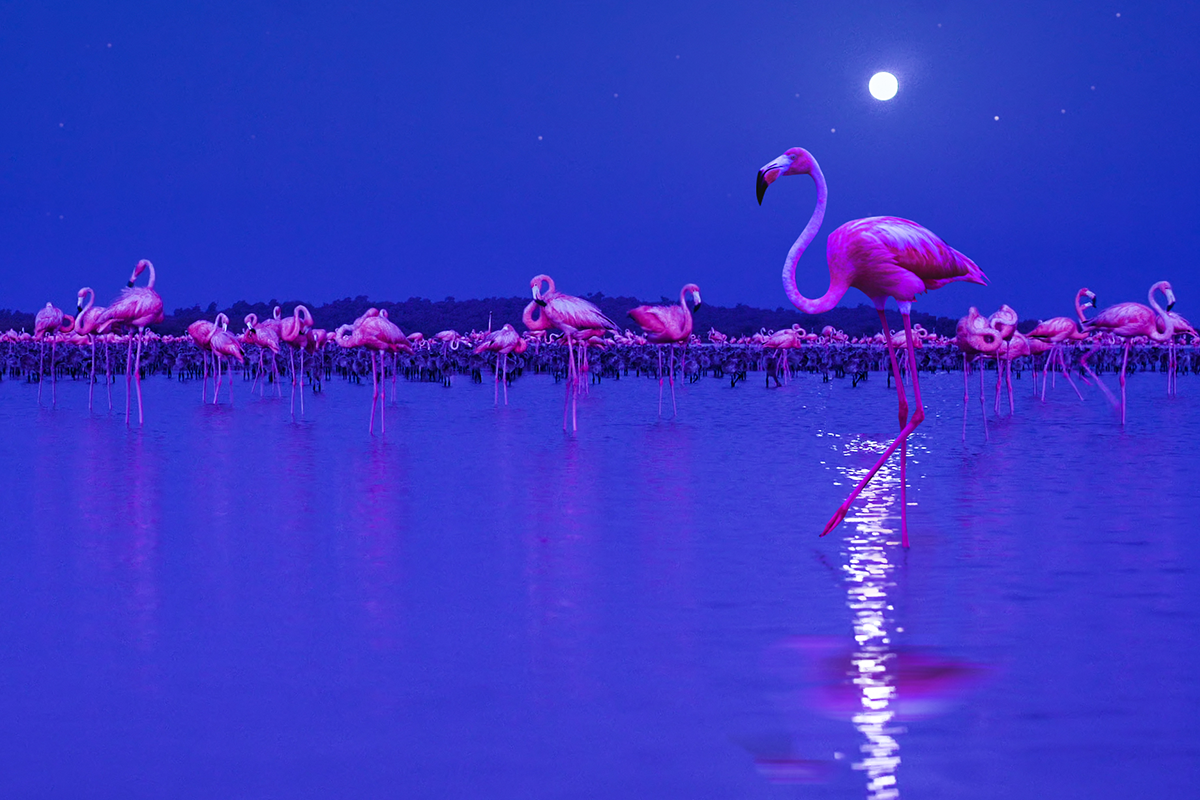OLED technology has both advantages and disadvantages. On the one hand we have a very high contrast and exceptional blacks, on the other a lower peak brightness and color volume than the best LCD televisions. This has not prevented OLED TVs from standing out from the crowd, the precision in the management of the light offered by these TVs is now unreachable by LCD models, even from the new mini LEDs.
That's why, taking advantage of the new documentary series "Night on planet Earth", which recently arrived on Netflix, we tested one of the best OLED televisions available today, the Sony AG9 65-inch, with a high quality streaming broadcast that uses Dolby Vision very well.
Furthermore, "Night on planet Earth"seems designed specifically to take full advantage of the characteristics of OLED televisions, since it captures our beautiful planet at night, where darkness reigns supreme.
A tech demo for all televisions

Before telling you about our viewing experience with the Sony AG9 let's try to understand how it was shot "Night on planet Earth"To talk about the technologies used is Bill Markham, one of the producers of the series."This is the first time that technology allows us to create an entire series on the nocturnal behaviors of animals"To achieve the highest possible quality in poor lighting conditions, two types of cameras were mainly used. The first uses a new technology capable of shooting in color in the presence of only moonlight, while maintaining high video quality.
A very complex task, normally they are used at night infrared cameras, who cannot capture the color information. In the total absence of moonlight, these were used, the only ones capable of shooting in these extreme conditions.

The low light of the subjects immortalized in "Night on planet Earth" has pushed the filming capabilities of modern cameras to the limit, but the result are unique images of their kind, which perform best especially on televisions that manage to finely manage lights and shadows, just like the Sony AG9 that we used during the test.
How do you see "Night on planet Earth?"


If we were to use a single word to describe the work done in "Night on planet Earth"and the yield on Sony's AG9, then this would be"unbelievable"Looking at the Netflix documentary, the first thing to think about is that some immortalized sequences are not real, but the result of some elaborate special effect. We are obviously talking about the shots taken by high sensitivity cameras, which really manage to capturing color with the sole help of moonlight. Watching the night hunting of cheetahs in the Savannah is a unique sight. The cats they almost seem to run on a pastel background, where the contrast offered by the AG9 allows you to grasp the details well, as far as possible because the shooting technique used tends to mix them slightly, thanks to the tall grass that characterizes this habitat, difficult to manage at best.
The captured images are still incredible when you consider the conditions in which they were made and allow you to see the Savannah as never before, impossible to do better than that.

But the show offered by pink flamingos in the Yucatan peninsulain Mexico is even more incredible. Thanks also to shooting conditions that facilitate the work of high sensitivity cameras, the quality achieved is even higher than the sequences seen in the Savannah. Some shots highlight the contrast between the profiles of the flamingos, the water and the night sky, creating an effect that seems to be taken directly from a shadow theater.
The rendering on the Sony TV is perfect, moreover the OLED TVs are unrivaled in managing images like this, in which light and shadow draw clear and marked lines. Same thing when the cameramen decide to put emphasis on color, with the pink of flamingos reflecting on the body of water on which they are placed and the sky in the background, making them stand out more from the image.
These are just some examples of the wonders immortalized by the cameras. For viewing we recommend using the "Dolby Vision Dark" profile of the TV, the higher brightness of the "Dolby Vision Light" setting tends to emphasize more the limits of the cameras and the video compression.

Ultimately, what Netflix did with "Night on planet Earth"It is simply exceptional work and has the great advantage of bringing attention back to habitats in constant danger of extinction, but immortalized several times over time and whose survival is far from obvious. Now you can see them in a way and with a quality never observed before, especially with a good TV.















